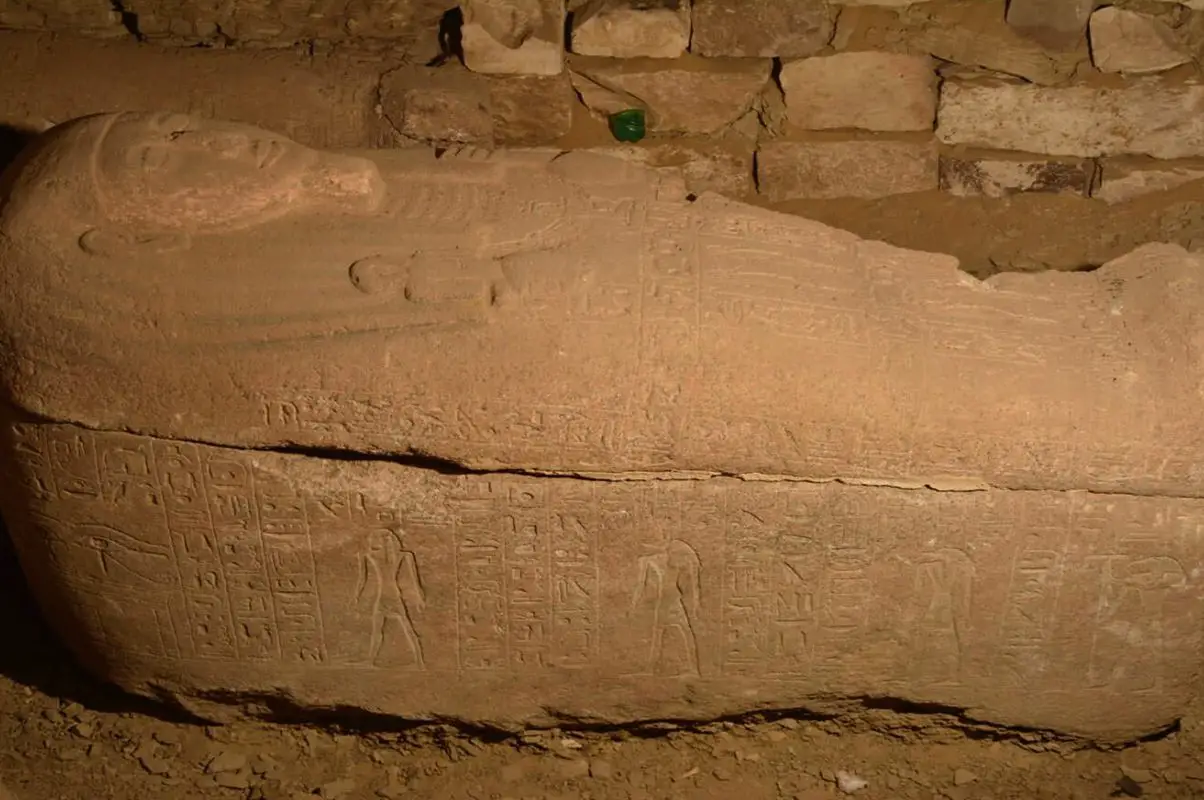Archaeologists have uncovered the granite sarcophagus of a high-ranking official from the reign of Ramesses II at Saqqara, Egypt.
Excavations were led by Dr. Ola Al-Ajizi from the Faculty of Archaeology at Cairo University, part of a study over the 2021-2022 work season to excavate the areas around the ascending corridor of the pyramid of King Unas.
The team found a burial chamber containing the sarcophagus of Ptah-em-uya, a high-ranking official who was the “royal secretary, chief overseer of cattle and head of the treasury of the Ramesseum (the mortuary temple of Ramesses II),” according to Mostafa Waziri, head of Egypt’s Supreme Council of Antiquities.
This places the sarcophagus to the 13th century BC during the 19th Dynasty of Egypt, a period also known as the Ramessid dynasty when the New Kingdom of Egypt reached the zenith of its power.
The sarcophagus is covered in sacred texts such as the “Djed” which is associated with the creator god Ptah and Osiris, and the “Tyet” (Isis knot) to safeguard the deceased, as well as scenes representing the sons of the god Horus. The coffin lid appears to be broken, indicating that the tomb was previously looted, leaving only traces of resin produced through the process of mummification.
Recent excavations in Saqqara have also unveiled a cache of 150 bronze statuettes in May, five ancient tombs in March, and more than 50 wooden sarcophagi n 2021 dating back to the New Kingdom Period.
Ministry of Tourism and Antiquities
Header Image Credit : Ministry of Tourism and Antiquities






